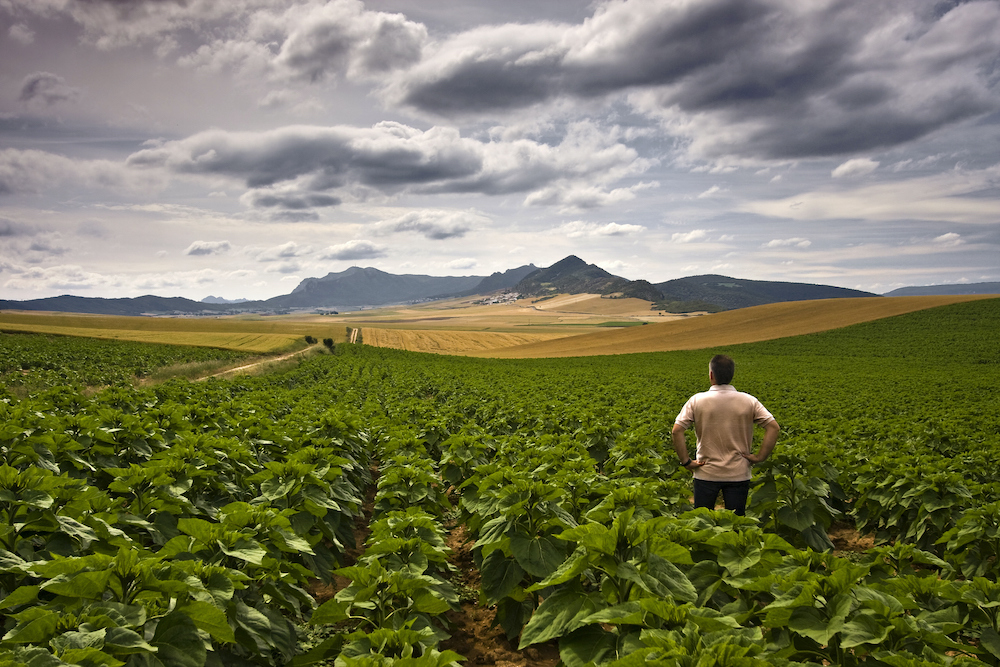Opinion: the Caribbean's challenge to control Black Sigatoka

By Inter-American Institute for Cooperation on Agriculture (Trinidad and Tobago office) technological innovation specialist Humberto Gómez
 The importance of bananas and plantains is based on two main factors: firstly, they are a primordial food source and secondly, they are an export product from developing countries to meet the demand of developed countries (Europe 39%, U.S. 26%, Japan 7%, Russia 5%, Canada 3%). They are also consumer goods that generate employment and critical incomes for the social stability of producing countries. The tropical nations of South America supply themselves and countries with temperate weather in the region, such as Chile or Argentina.
The importance of bananas and plantains is based on two main factors: firstly, they are a primordial food source and secondly, they are an export product from developing countries to meet the demand of developed countries (Europe 39%, U.S. 26%, Japan 7%, Russia 5%, Canada 3%). They are also consumer goods that generate employment and critical incomes for the social stability of producing countries. The tropical nations of South America supply themselves and countries with temperate weather in the region, such as Chile or Argentina.
Some countries in the Carribean, the Pacific and Africa (recent former European colonies) mainly direct their exports to Europe, where they enjoy favorable access conditions. American countries (Mexico, Central America, Colombia, Ecuador and Peru) and Asia (above all the Philippines) supply the United States, Europe, China, Japan, Russia, the Middle East and the former Soviet republics, according to Food and Agriculture Organization (FAO) statistics.
Although the Caribbean represents just 2% of global trade, the income generated from exports is significant, reaching 22% in Saint Vincent and the Grenadines, 19.7% in Saint Lucia, 18.1% in Dominica and 6.8% in the Dominican Republic. The sudden export losses caused by Black Sigatoka could become disastrous for these countries.
For all these reasons, the situation unleashed on this area of the world by the disease Black Sigatoka that just affects these crops is an emergency, and as such a challenge with many aspects to address. This is where IICA, the FAO and other cooperating international organizations are acting decisively to find solutions.
Black Sigatoka is caused by a fungus that attacks the majority of banana and plantain varieties. The disease destroys the photosynthetic capacity of the leaves, advancing quickly and preventing the accumulation of reserves, devastating new leaves as they are formed. The weight of bunches can be reduced by up to 57% and it spoils the fruit through premature ripening.
In the Antilles, bananas and plantains are grown on small plots. Because of insularity, agricultural inputs and salaries are more costly compared to other regions. This combination of factors makes Black Sigatoka a more complex challenge. Yield losses lead to an unfortunate reaction in the chain: job losses that are difficult to replace due to the size of the countries, a fall in fiscal revenues, and eventually a shortage for the popular diet that has to be replaced by imports that were unnecessary before. This in addition to the fact the food import cost per capita in the Caribbean is one of the highest in the world.
Honduras was the first American country to detect Sigatoka, in 1972, and from there it expanded to all growing areas. In the Antilles, it was reported in Cuba and Jamaica in the 90s, and in the rest of the Caribbean from the start of 2003. Currently, the disease covers almost all of the Caribbean, and in the American hemisphere from Mexico to the southern Brazilian coast on the frontier with northern Argentina.
Thanks to the efforts of breeding, varieties have been developed with good tolerance, providing food security for growing countries. However, these varieties don't meet the demands of export markets.
Initially, the control of Sigatoka with fungicides yielded positive results, but the pathogen developed resistance, obliging new fungicides to be drawn upon, which also lost efficacy. This demanded the development of control strategies based on a logic of coexistence with the disease as erradication was not possible.
These new measures are more efficient and consist of controlling soil humidity well (irrigation and drainage), providing optimal nutrition to plantations, pruning injured leaves, applying fungicides in accordance with climatic conditions, and utilizing different types of fungicides in rotation. In the case of Costa Rica, under conditions favorable for the disease (high humidity and temperature all year), it is estimated the control of Sigatoka costs US$2100 per hectare each year.
The Caribbean requires these types of controls, but before that it is necessary to raise the capacity of growers to be able to apply them, and that implies additional cost and time.
The FAO ordered the inspection of several countries, an analysis of their conditions and recommendations based on the findings. For its part, IICA was in charge of virtual seminars for countries in the Americas where experts from EARTH University, FAO and IICA instructed growers about control methods and the current state of Black Sigatoka.
The goal to reach is optimizing the capacity response of these countries, attend to food security, increase training for integrated disease management, in addition to other ongoing initiatives where countries have committed their efforts. All of this is in order not to give up the battle that they are not willing to lose.
The following challenge in the fight with Black Sigatoka is in locating the timely necessary economic assistance to introduce tolerant germplasms to growers, and to be able to transfer and validate technology for the integrated control of the disease. In this way, the production of bananas and plantains will continue, generating food, employment and incomes that are essential for social and economic stability in the Carribean.









































